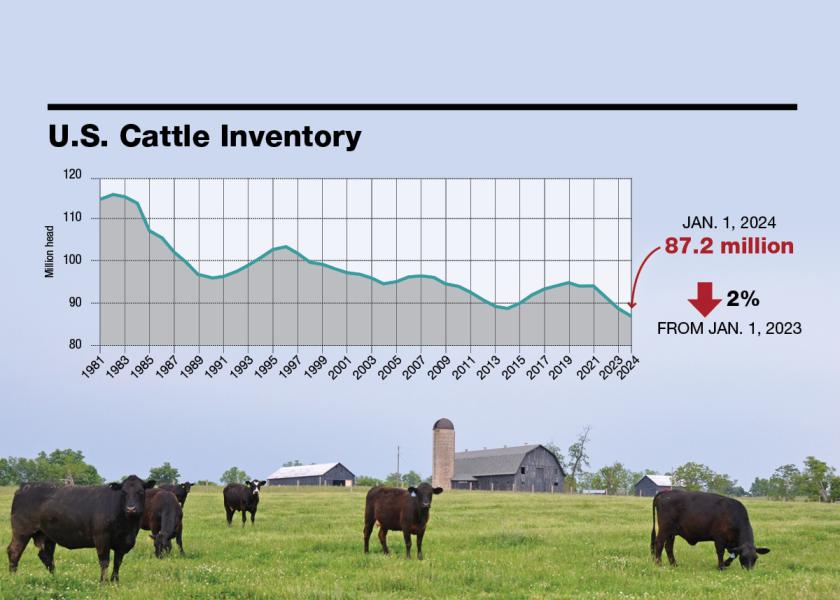U.S. Cattle Inventory Reaches 73 Year Low

Not many ranchers active today will remember the last time the U.S. cattle industry was this small. On January 1, 2024, the All Cattle and Calves inventory was 87.15 million head, the smallest total inventory since 1951. The All Cattle and Calves inventory is 1.9 percent smaller year over year and is the fifth consecutive year of declining cattle inventories, a total decrease of 7.65 million head or 8.1 percent since the most recent peak in 2019. The 2023 calf crop was 33.6 million head, down 2.5 percent year over year and the smallest calf crop since 2014.
The January 1, 2024 beef cow herd inventory was 28.22 million head, down 2.5 percent year over year and a decrease of 3.47 million head or 10.9 percent lower, from the cyclical peak in 2019 (Table 1). The current beef cow inventory is the smallest beef cow herd since 1961. Table 1 shows that the top ten beef cow states, which currently represent 57.3 percent of total beef cows, accounted for 79.4 percent of the year over year decrease in total beef cow numbers and 67.7 percent of the decrease from 2019 to 2024.

The inventory of beef replacement heifers on January 1, 2024 was 4.86 million head, down 1.4 percent year over year. However, the 2023 beef replacement heifer inventory was revised down by 4.5 percent from the initial value reported one year ago. Thus, the 2024 inventory of beef replacement heifers is down 11.4 percent from the 2022 inventory and is the smallest beef replacement heifer total since 1950. Since 2001, USDA has provided the portion of beef replacement heifers that are expected to calve in the coming year. The current inventory of these bred beef heifers is 3.05 million head, the smallest in the data back to 2001.
The estimated supply of feeder cattle outside feedlots is calculated by summing the inventories of other heifers, steers >500 pounds and calves <500 pounds and subtracting the inventory of animals already in feedlots. On January 1, 2024 inventories of other heifers, steers and calves under 500 pounds were all down year over year and feedlot inventories were up 1.6 percent leading to an estimated supply of feeder cattle outside feedlots of 24.2 million head, down 4.2 percent from one year ago. The estimated feeder supply can be consistently calculated back to 1972 and the 2024 value is the smallest in that 53-year period.
The smaller cattle inventory is projected to result in a decrease of about five percent in total beef production to roughly 25.5 billion pounds in 2024. That’s three times as much beef as was produced in 1951, the last time the total cattle inventory was this small; impressive growth in productivity in the beef cattle industry. Nevertheless, the current ability to produce beef is smaller than market potential today and the industry will look to rebuild numbers and increase beef production when conditions allow.
Derrell Peel, OSU Extension livestock marketing specialist, says the recent extreme temperatures in the country could negatively impact prices on SunUp TV from January 27, 2024. https://www.youtube.com/watch?v=L_Bgb-OUYWo







